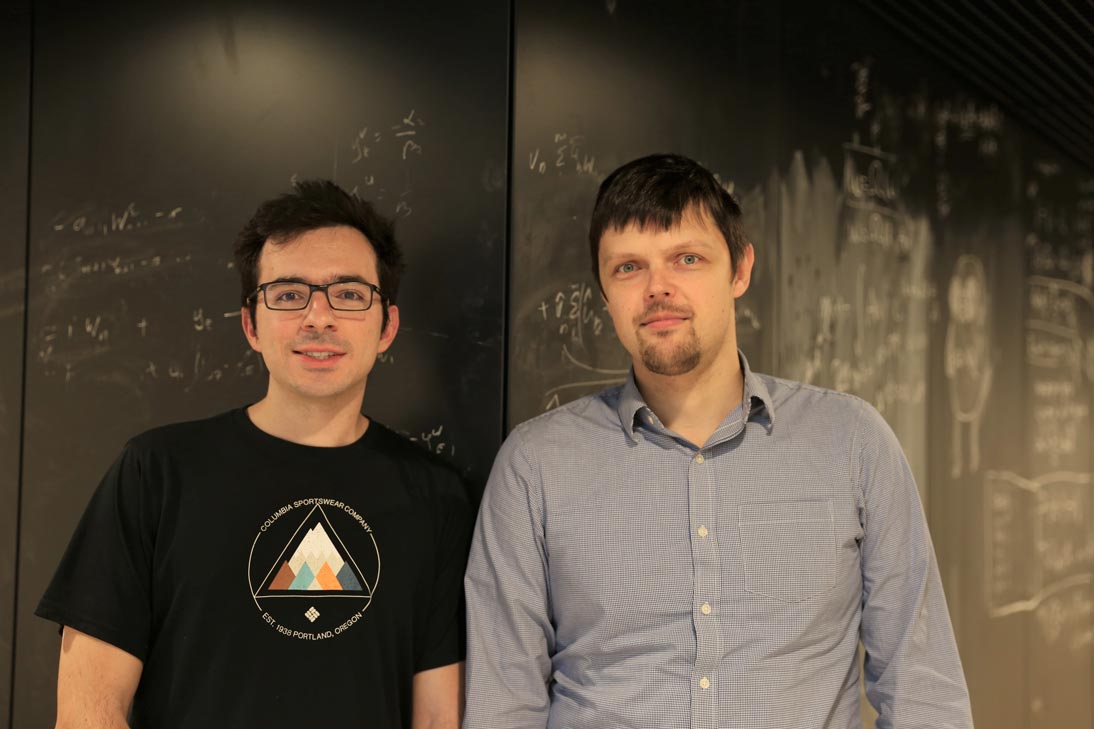February 28, 2020
The beginning defines the end – classical physics helps to predict the fate of interacting quantum systems
IST Austria scientists and collaborators revealed surprising effects of different initial configurations in quantum many-body systems. By using concepts of classical physics applied to quantum systems, scientists find a way to search for the “least chaotic” initial conditions in interacting quantum systems. Study published in Physical Review X.

IST Austria Postdoc Alexios Michailidis and Professor Maksym Serbyn, together with collaborators from the University of Geneva and the University of Leeds successfully, linked classical and quantum physics to find the “least chaotic” initial configurations. The study now published in the journal Physical Review X provides a method for finding configurations most resilient to chaos and gives specific examples that could be tested in future experiments.
In the classical world, we are familiar with chaos – irregular and unpredictable behavior of complex systems, such as weather, planetary motion, or turbulence. Chaos limits our ability to predict the future behavior of classical systems even when the theoretical model is well known. Quantum systems show behavior that is similar in many aspects. However, not much is known about the relevance of classical chaos to interacting quantum systems. IST Austria Professor and 2019 Boltzmann Award Winner Maksym Serbyn, together with postdoc Alexios Michailidis and collaborators from the University of Geneva and the University of Leeds, built a specific link between classical chaos and quantum systems.
The starting configuration least prone to chaos
The initial conditions can strongly influence the behavior of a classical system. Just imagine the two situations in a Viennese ball: suppose when the music begins, all partners are standing next to each other, or they are scattered across the dance hall. In the first case, one shall see the beautiful dance pattern, while in the second case, one most likely will observe true chaos. Deriving from such sensitivity of classical systems to initial conditions, scientists managed to give direction which initial states should be constructed to obtain the slowest relaxing behavior in quantum systems. Some of these initial patterns are realizable in the so-called chains of Rydberg atoms, where they lead to a long-lived oscillation.
Linking classical physics and the quantum world
IST Professor Maksym Serbyn about the recent findings: “What I like most about this project is that it brings together now quantum many-body and classical physics. It already generated experimental predictions that hopefully will be tested very soon.” Postdoc Alexios Michailidis: “The connection between the many-body quantum dynamics and the phase space structure of the approximate classical system could provide an avenue for generalizing few-body chaos to many-body quantum systems.”
About the Serbyn Group at IST Austria
Professor Maksym Serbyn joined IST Austria in 2017. His group’s primary focus is understanding the mechanisms of thermalization breakdown in quantum systems in a non-equilibrium state. The MIT PhD Graduate from 2017 received an ERC Starting Grant and the Boltzmann Award of the Austrian Physical Society in 2019.
Publication
A. A. Michailidis, C. J. Turner, Z. Papić, D. A. Abanin, M. Serbyn. 2020. Slow quantum thermalization and many-body revivals from mixed phase space. Physical Review X. DOI: 10.1103/PhysRevX.10.011055



